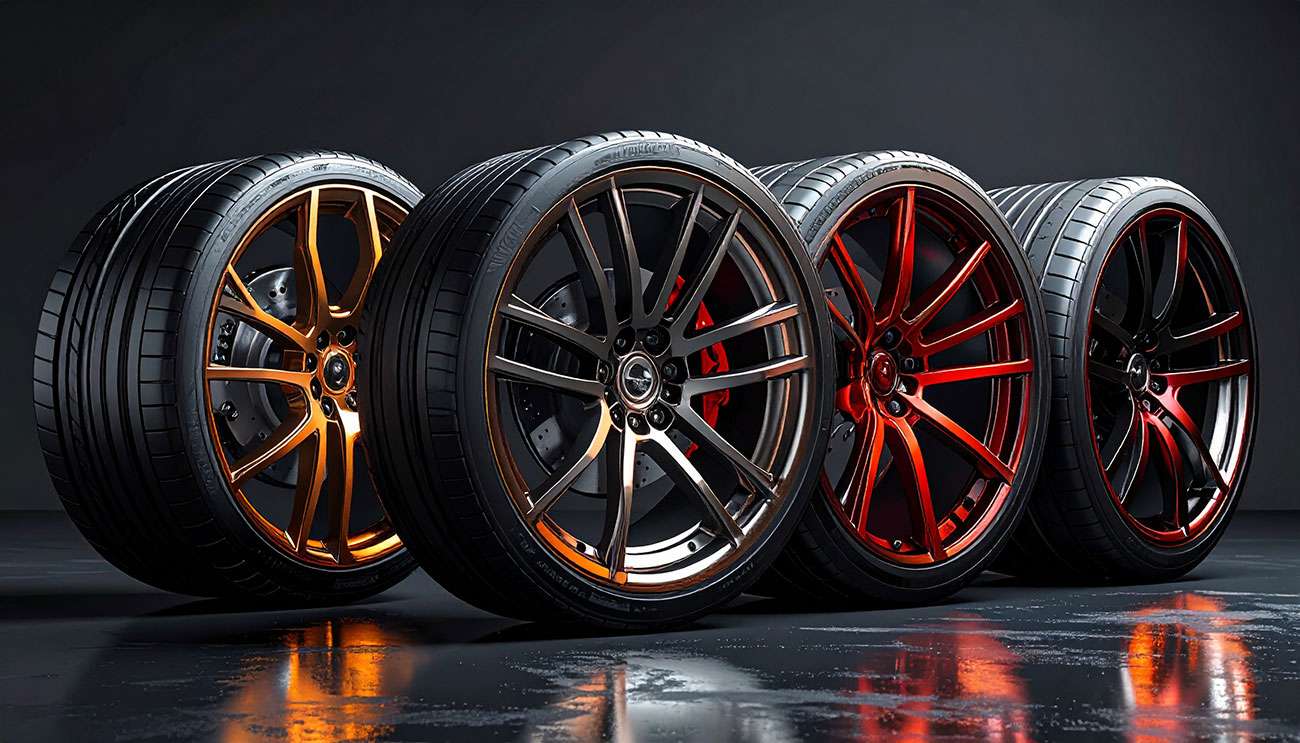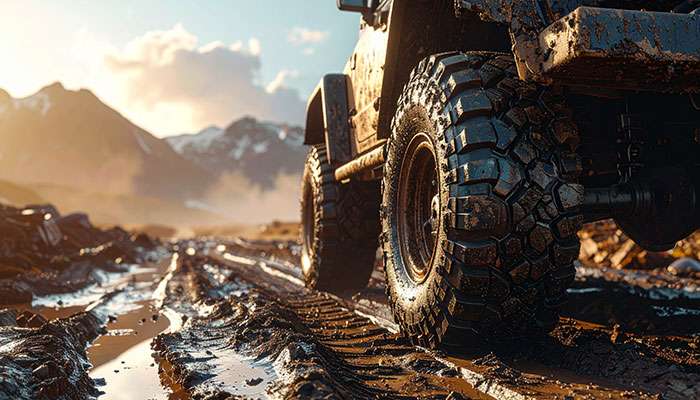How to Choose the Right Custom Wheels for Your Car (and Build a Wheel‑and‑Tire Package on Performance Plus Tire)

Choosing custom wheels is both an art and a science. Start by understanding wheel specifications—size, width, bolt pattern, offset, material and load rating. Match these to your vehicle’s requirements and driving goals. Consider aesthetics, performance and durability when selecting a wheel type. Above all, prioritize safety and consult experts when in doubt.
Understand the Basics: Size, Bolt Pattern, Offset and Material
Before looking at wheel designs, make sure you know your vehicle’s factory specifications and how they affect wheel fitment. These specifications are usually stamped on the driver’s door jamb or listed in the owner’s manual.
- Wheel size (diameter & width) – The wheel diameter describes how large the rim is; common sizes range from 16" to 22", but options can run from 12" to 24". Width determines the tire width that will fit; wider wheels improve traction but may require modifications. Larger diameters and widths change the vehicle’s stance and can alter ride comfort.
- Bolt pattern – Count the number of lugs and measure the diameter of the circle they form (e.g., 5×114.3). Matching your vehicle’s bolt pattern ensures the wheels fit securely. Many vehicles use 4‑, 5‑, 6‑ or 8‑lug patterns.
- Offset and backspacing – Offset is the distance between the wheel’s mounting surface and its centerline. Positive offsets tuck the wheel deeper into the wheel well, while negative offsets push it outward. Backspacing measures the distance from the mounting surface to the back of the wheel; proper offset/backspacing keeps the wheel from rubbing against suspension components.
- Center bore and fitment – The wheel’s center bore must match the vehicle’s hub for a hub‑centric fit. Improper fit can cause vibration and wear.
- Materials and construction – Wheels are commonly made of aluminum alloy or steel. Alloy wheels are lighter and dissipate heat better, improving braking performance. Forged aluminum and carbon fiber are strong and lightweight but costly. Steel wheels are durable and affordable but heavy.
- Load rating – Make sure the wheels can support the weight of your vehicle.
Consider Your Driving Style and Needs
Once you know the technical requirements, think about how you plan to use your vehicle.
- Daily driving and comfort – Large diameters and low‑profile tires look aggressive but can reduce ride comfort. Staying near the factory size often delivers the best balance of comfort, handling and tread life.
- Performance and handling – Wider, lightweight wheels improve grip and steering response. For sport‑compact cars and track use, tuner wheels offer lightweight designs that enhance acceleration and braking. Performance wheels often use forged aluminum for strength without extra weight.
- Off‑road and durability – Trucks and SUVs benefit from rugged off‑road wheels and beadlock designs that keep the tire bead secure when airing down for traction. Steel wheels or reinforced alloys handle abuse better than delicate lightweight wheels.
- Aesthetics and finish – Wheels come in chrome, polished, painted, machined and colored finishes. Choose a finish that complements your vehicle and stands up to local weather; coastal areas often require corrosion‑resistant coatings. Use online visualizers to preview how a wheel style looks on your car.
Match the Wheels to the Tires
Wheel size and width determine which tire sizes fit properly. When changing wheel diameter, maintain the overall tire diameter so the speedometer remains accurate and the vehicle’s electronics (ABS, traction control) function correctly. Consult your tire manufacturer’s recommended rim width and choose a width in the middle of that range to balance ride quality, handling and tread wear. If you plan to plus‑size your wheels (larger diameter with lower‑profile tires), make sure there is enough clearance for brakes and suspension.
Safety, Regulations and Professional Help
Wheel modifications can affect vehicle safety. Always check the wheel’s load rating, ensure compliance with local regulations and use a fitment guide or professional help to verify compatibility. A hub‑centric fit (where the wheel’s center bore matches the hub exactly) prevents vibrations and ensures stability. After installing new wheels, re‑torque the lug nuts after driving 50–100 miles and regularly check torque to manufacturer specifications.
How Performance Plus Tire’s “TreadMatch Fitment Matrix” Simplifies Wheel Selection
Many retailers require you to know all of these specs before you shop. Performance Plus Tire takes a different approach with a guided process called the TreadMatch Fitment Matrix. This system lets you start with your vehicle information, choose the wheel type that matches your style and needs, and then automatically pair wheels with compatible tires. Here’s how it works:
- Enter your vehicle details – On Performance Plus Tire’s Wheel & Tire page, select Shop by Vehicle and enter your make, model and year. For example, a 2020 Acura ILX can be selected with trim and whether you’re shopping for wheels or tires. This automatically loads the correct bolt pattern, diameter and offset range for your car.
- Choose the original wheel size and wheel type – Performance Plus Tire’s Fitment Matrix is unique because it lets you choose the type of wheel while entering your vehicle information. For the 2020 Acura ILX, you can select your OEM size and specify whether you want custom wheels (personalized designs and finishes) or tuner wheels (lightweight, performance‑oriented). For a 2020 Ford F‑150, the options include OEM size, wheel type (custom or off‑road), and even lift type (no lift, leveling kit, 3″ lift, etc.), ensuring you see only wheels that fit your suspension.
- Browse wheels that fit – The Fitment Matrix filters all wheels by size, bolt pattern, offset and load rating. You can compare finishes, styles and prices without worrying about compatibility. The system highlights options like off‑road wheels for trucks or tuner wheels for sport compacts.
- Build a wheel‑and‑tire package – Once you pick a wheel, Performance Plus Tire prompts you to add matching tires. It automatically pairs your wheels with tires of the correct size, load rating and speed rating. You can bundle wheels and tires into a Wheel & Tire Package, which arrives mounted and balanced—saving time and ensuring proper fit.
- Check out with confidence – The entire Fitment Matrix is designed to guarantee proper fitment. By specifying wheel type and suspension setup up front, you drastically reduce the risk of ordering incompatible parts. Financing options and shipping costs are displayed during checkout.

Key Takeaways
- Know your specs: Understand wheel size, bolt pattern, offset, center bore, material and load rating before shopping.
- Match style to needs: Select wheels based on driving style—daily comfort, high‑performance or off‑road durability—and choose finishes that suit your environment.
- Maintain proper fit: Keep overall tire diameter consistent, ensure a hub‑centric fit and adhere to manufacturer offsets to protect suspension components.
- Use the TreadMatch Matrix: Performance Plus Tire’s Fitment Matrix guides you through vehicle selection, wheel type and size, and automatically pairs wheels with compatible tires.
- Build Wheel and Tire Packages: Bundling wheels and tires into a package saves time, ensures compatibility and often qualifies for free shipping and financing.
Frequently Asked Questions
What wheel specifications do I need to know before buying custom wheels?
You should know your vehicle’s wheel diameter and width, bolt pattern, offset/backspacing, center bore, material preference and load rating. These specifications ensure proper fitment and safety.
How does the TreadMatch Fitment Matrix help me select wheels?
The TreadMatch Fitment Matrix guides you through selecting your vehicle, choosing original wheel size and type, filtering only wheels that fit and matching them with compatible tires, allowing you to build a package with confidence.
Can I build a wheel and tire package on Performance Plus Tire?
Yes. After selecting wheels, the Fitment Matrix offers compatible tires, enabling you to bundle them into a wheel‑and‑tire package that arrives mounted and balanced.

